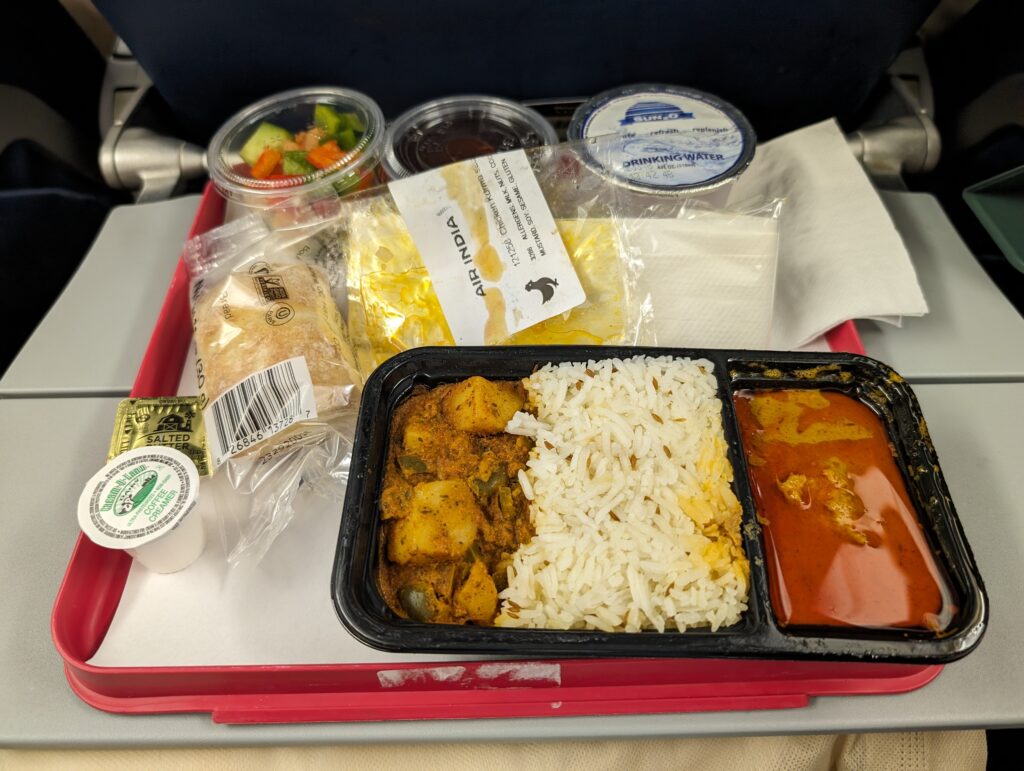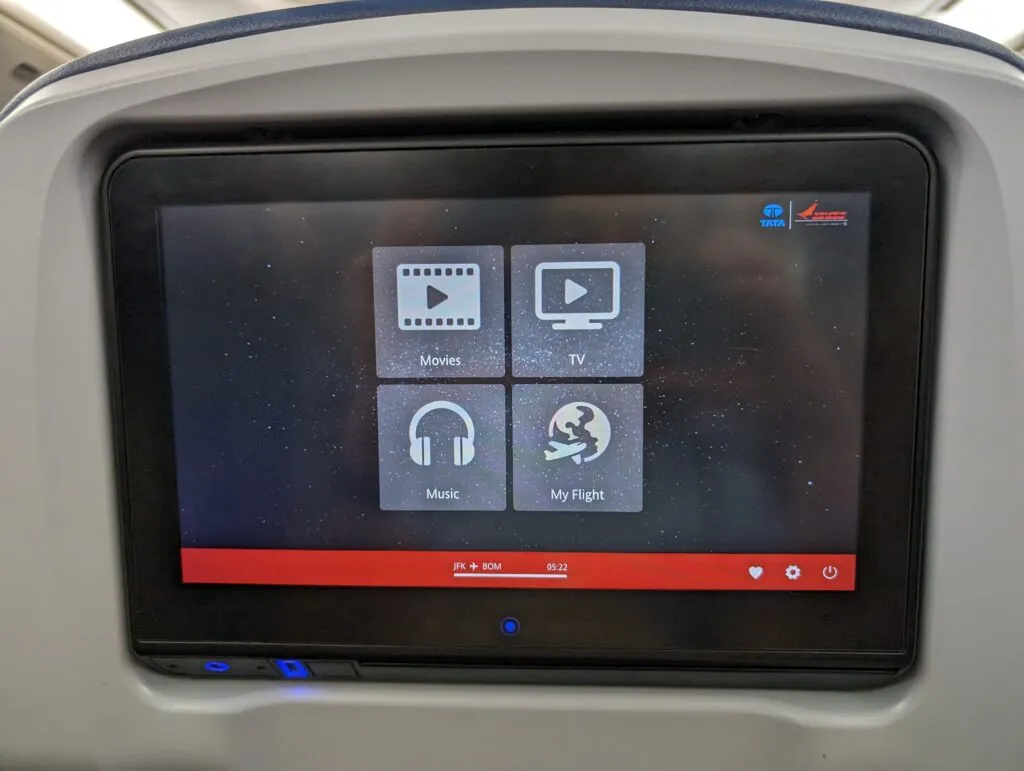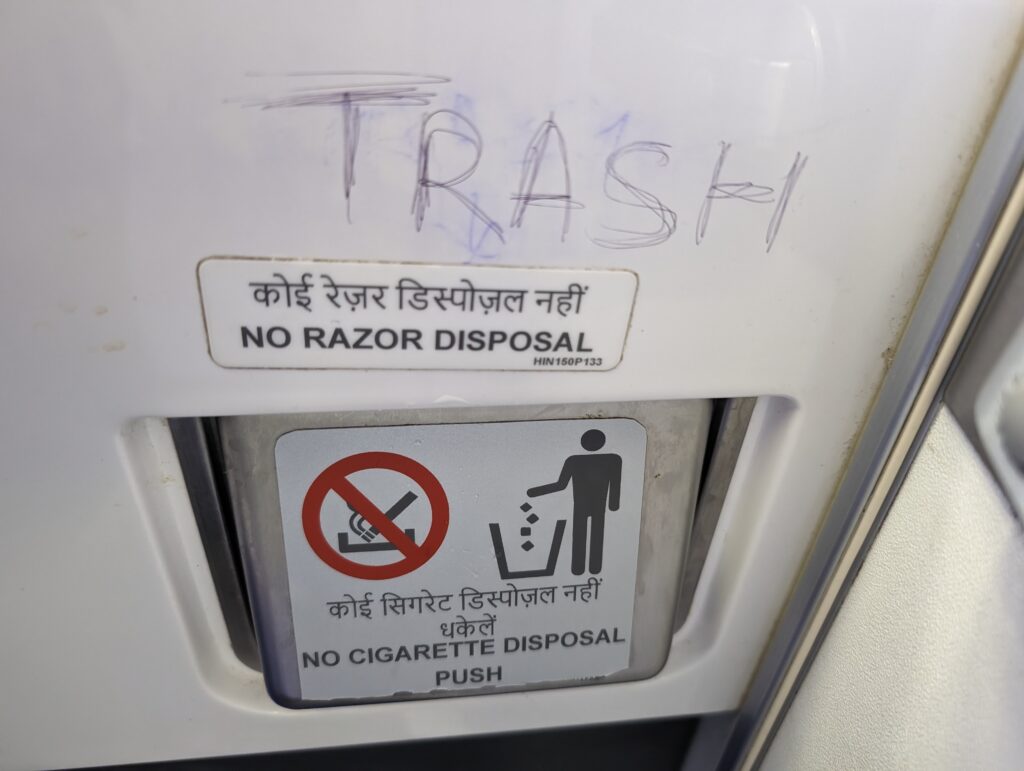 Two years on from Tata Group’s acquisition of Air India, my partner and I sampled the ‘new’ Air India on a flight from New York JFK to Mumbai. This daily service is flown almost exclusively by Air India’s ex-Delta Boeing 777-200LRs.
Two years on from Tata Group’s acquisition of Air India, my partner and I sampled the ‘new’ Air India on a flight from New York JFK to Mumbai. This daily service is flown almost exclusively by Air India’s ex-Delta Boeing 777-200LRs.
Delta modernized the 777 cabins in 2018, introducing Delta One business class suites and Premium Select premium economy, only to ground and subsequently offload the jets at the start of the Covid pandemic. Air India has since leased five of these -LRs, retaining the Delta hard product and styling, without any logos.
Interestingly, Delta’s final -LR services included the same JFK-Mumbai nonstop route that we found ourselves flying in mid-January 2024 with Air India.
But let me back up to the booking process. Air India’s new, modern and re-branded website is a world away from the old, outdated site! Booking was a breeze with an unbeatable $700 roundtrip for economy class.
On the day of travel, check-in was very smooth, even though Air India was juggling two fully loaded flights to India through one bank of counters at JFK Terminal 4.
Although boarding started just 15 minutes before departure, we pushed back only 10 minutes late, and were later informed that the timing perfectly matched our ATC-assigned departure slot. The efficient boarding process was certainly a far cry from the laid back reputation of the airline pre-Tata ownership.
The seats and much of the CMF (color, materials, finish) are all Delta. Economy class seats are clad in the familiar blue leather upholstery and light gray thermoplastics. Legroom is average but seat width is above average as the aircraft is configured in a PaxEx-friendly 3-3-3 (versus a more standard 10-abreast layout).
Two power sockets are shared for every three seats in economy, while each IFE screen features a USB port to accommodate additional charging needs.
Unfortunately, we also witnessed too much of the ‘old’ Air India on this flight. The first drink & snack service, 30 minutes after takeoff, was oddly from a half-stocked cart that was missing several beverage options. This was swiftly followed by a haphazard food service that missed our row.
We were eventually served with food, a smile, a shrug of the shoulders and an “it happens sometimes” comment. This good and bad theme continued throughout the flight with each service being somehow both quick and chaotic at the same time.
What cannot be faulted is the regularity of the service. We received two full meals, a hot snack, two dedicated drinks services with copious quantities of tea, coffee and water all served with older Air India branding. Yet, the meals were poor on this flight, and dare I say they were even worse than the pre-takeover quality I’ve experienced in the past.
Our flight was unfortunately ruined by inflight lighting that remained on at full brightness for the entire 13.5hr duration, apparently due to a frozen touchscreen on the cabin management system.
Without any eyeshades (note to self), sleep was hard to come by. Furthermore, the bright cabin meant that most passengers were awake and milling about, trying to pass the time as we crossed continents.
Also conspicuous in its absence was any form of moving map on the IFE system. Instead we had a rudimentary flight status screen with a countdown timer, which admittedly is better than nothing.
There were other curiosities. The inflight safety video, for example, featured scenes from Air India’s legacy 777s with bits of the newer Delta cabin edited in.
The IFE selection was also less generous than the world-class library the carrier has vowed to offer. To be fair, we flew earlier in January 2024, before the announced changes.
Inflight Wi-Fi, although understood to be in the pipeline, was absent as well. Candidly, I was thankful for the pre-loaded Netflix content on my iPad.
We arrived into Mumbai some 25 minutes early, and our bags were speedily delivered to the luggage carousel. Thus we ended a trip of contradictions. Old and new branding. Pleasant but disorganized service. Modern but malfunctioning lighting. An IFE system begging for new software and more content, which Air India has assured is coming.
The list could go on.
Air India CEO Campbell Wilson reportedly recently said that Vistara, which is due to be merged with Air India, will continue to operate independently until Air India reaches an “appropriate level”.
Flying Air India’s ex-Delta 777 left me with the impression that while the ‘new’ Air India has certainly taken off, it is still working to get to that “appropriate level” of cruising altitude.
Related Articles:
- Air India goes for gold with world-class IFE content
- Maharaja lives on as Air India reveals soft product aboard new A350
- Air India weaves new branding palette into A350-900 interiors
- Air India Express ready to write next chapter; sunsets AirAsia India
- VIDEO: Air India reveals cabin refurbishment plan for 777-300ER
- How other airlines’ PaxEx will help Air India to climb
- Air India gets a Delta-shaped PaxEx upgrade with 777-200LRs
Featured image credited to Karun Mukhi














